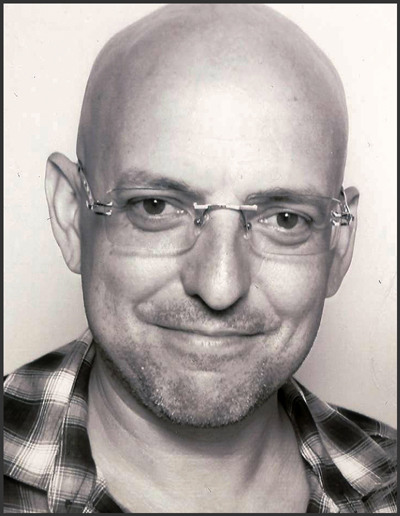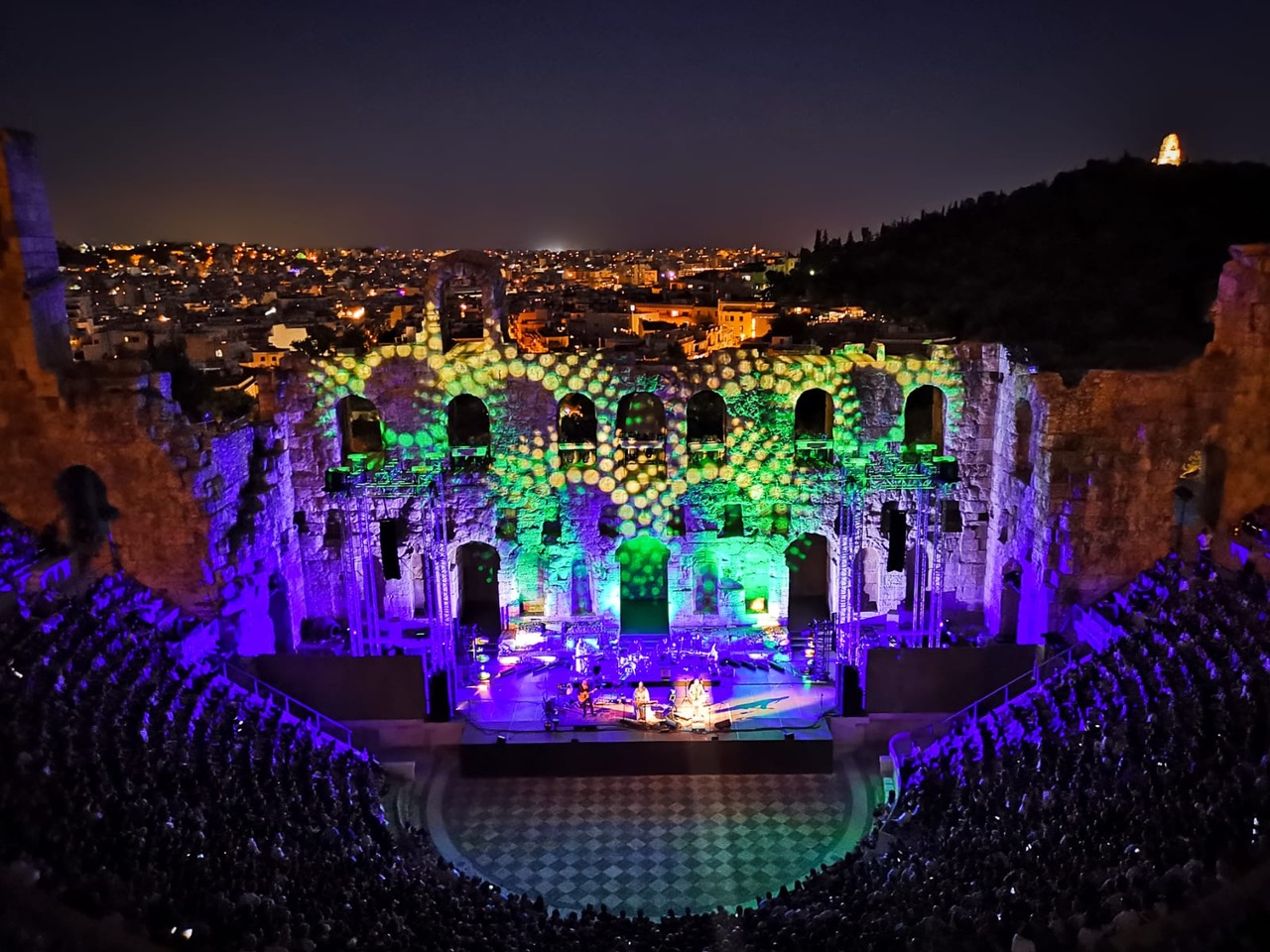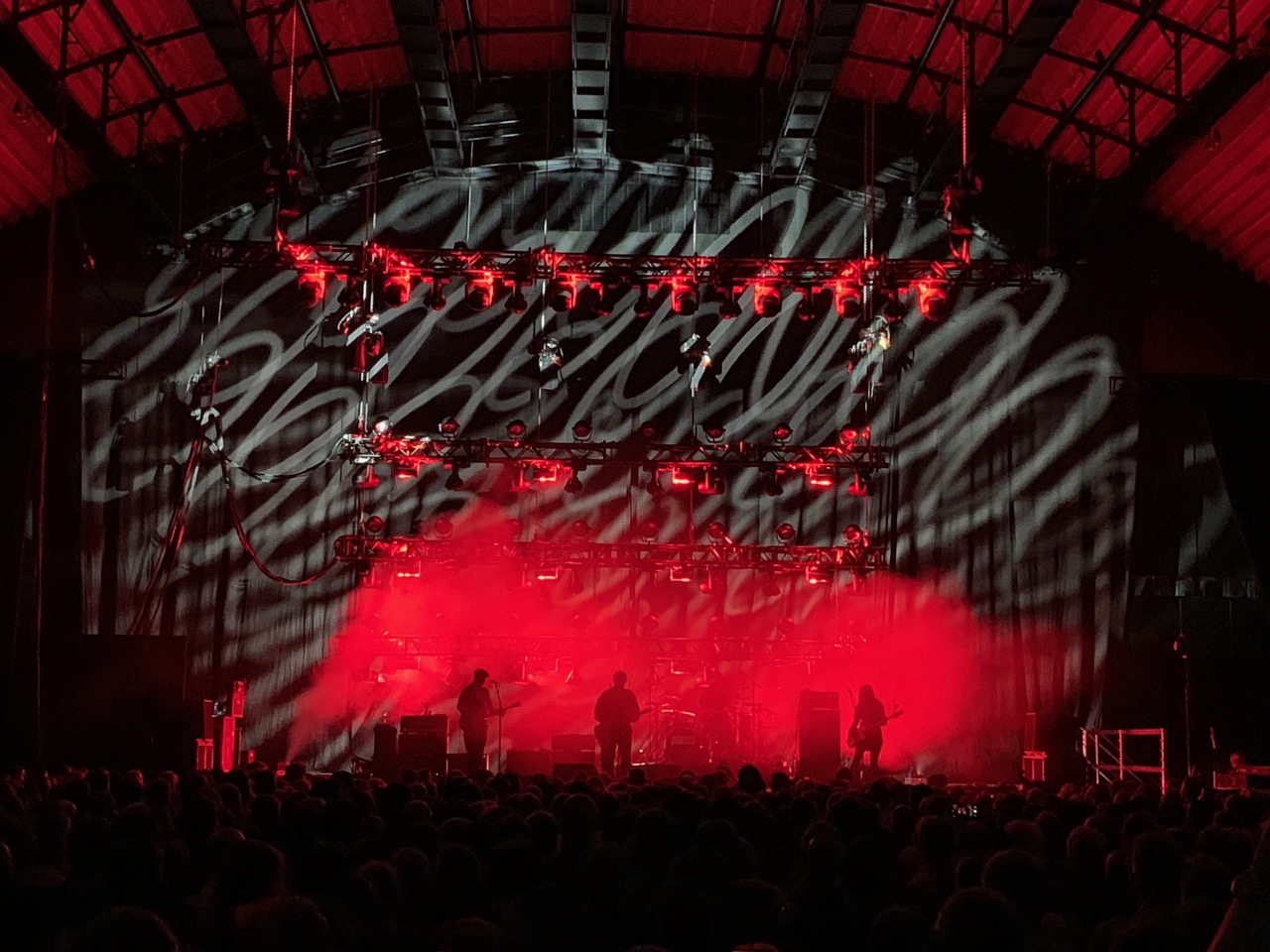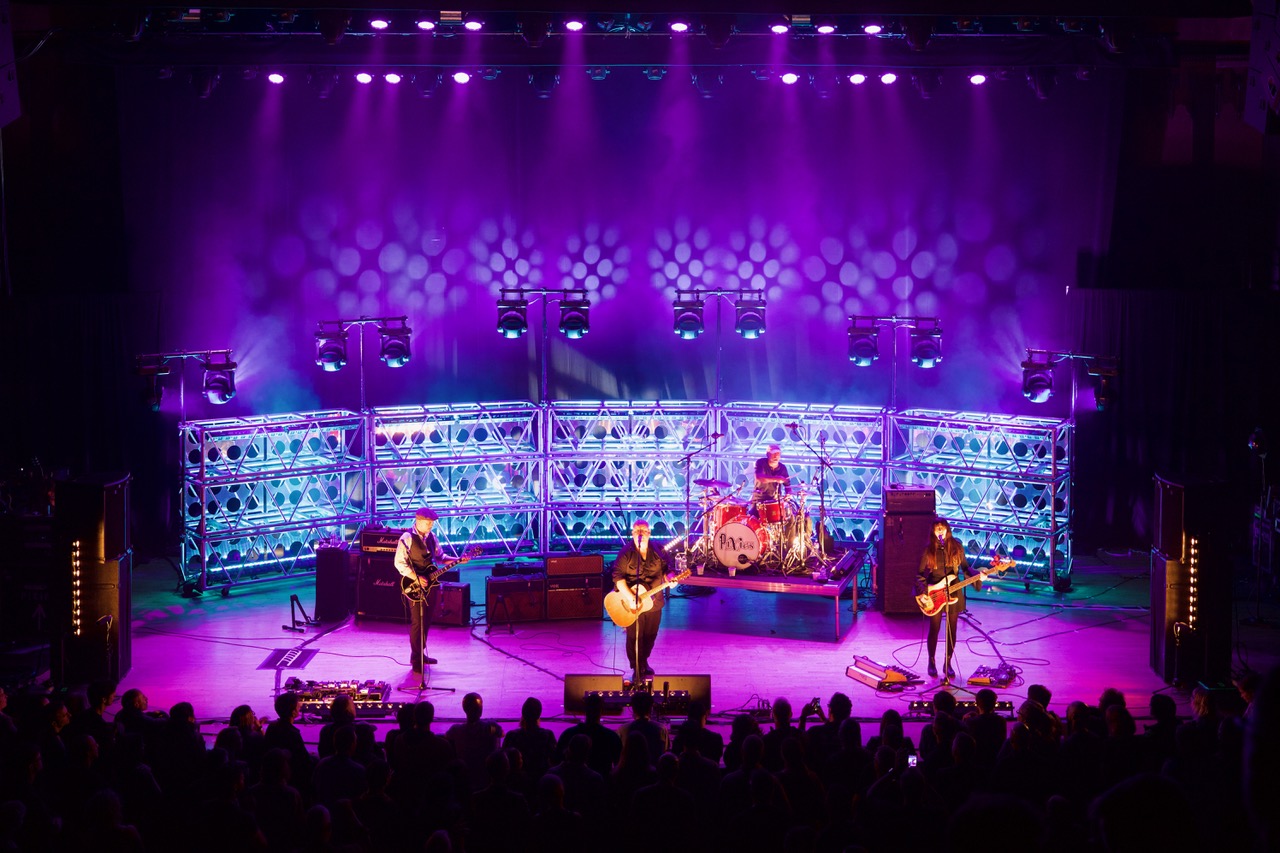Myles Mangino – Imaginative Light
Posted on January 5, 2021
Observe the world around you in detail, put what you see through the surreal liberating freedom of a dream, and you will be left with something true to the inspiration that drives your vision. For more than three decades, this New York based designer has followed this transcendent path to create a seemingly endless wellspring of original and engaging shows for a range of bands.
Like his friends and longtime clients, The Pixies, Mangino defies convention and fearlessly sets his creative sights on new horizons. After 34 years, his lightshows for the groundbreaking band have never come close to repeating themselves. His originality is not new merely for the sake of being different either. With each successive design, he reflects a different facet of the band and its music, one that is always more in the moment than its predecessor.
Through all the changes, it is always the band and its music that remain at the center of his creations, as his lighting follows each note, zooming up or down in harmony with every guitar chord or drum beat. He tells us that he likes to endow his designs with a cinematic quality. If his designs are indeed like films, they are ones we want to watch again and again, knowing that each showing will reveal something new.
Speaking to us from his Highlt Previs & Production Design Studio in Manhattan, he shared his insights into the imaginative power of light and how he is dealing with the pandemic.
 You’ve done some high-profile project since the pandemic like the Emmy Awards and Rockefeller Center. How was it different working on these post pandemic than it would have been before COVID-19? What was it like emotionally?
You’ve done some high-profile project since the pandemic like the Emmy Awards and Rockefeller Center. How was it different working on these post pandemic than it would have been before COVID-19? What was it like emotionally?
“It is very different. My first jobs during the Pandemic were lighting Joe Biden’s and Kamala Harris’ press conferences. So, this was my first time around any other people outside of my home. There were strict social distancing procedures in place, but I remember the first time a stage hand asked to use my C-wrench. I placed it on a case and stepped back. Then when he returned it I picked it up with a Clorox wipe, wiped it down and then went and washed my hands. Of course, now we understand it a lot more and know that was extreme, but no one knew at the time.
“The International Emmy’s was live streamed, only the host and FOH crew in the building. All recipients and guests streamed in. Everyone in the building got rapid COVID tests before we could enter the venue, and then waited in the lobby as results came in. It was stressful to hear your name called and then go up to the medics table to hear your results. We were all thinking what if some key person was positive? Would the whole event be off?
Doing the install at the Rockefeller Ice Rink was not so bad, as we were outside, minimal crew and everyone was spread out. Just wear your mask, keep a safe distance, regularly wash hands well and we can still work and get through this.”
We are entering a new year. With 2020 finally behind, where do you see our industry headed in the next 12 months?
“We haven’t yet reached the worst of the Pandemic yet. It’s looking like this winter will be really bad. All of the tours I had rescheduled from 2020 to 2021 have now been rescheduled to 2022. Even one that was supposed to start in September of 2021. So, we are looking, at minimal, end of 2021 for anything like concerts or theater to begin to happen again. But there is a lot of work out there. I believe the key is not to try to modify pre pandemic gigs to work in a pandemic, like the drive-in concerts that were tried. But instead, look for work that is needed and not affected by the pandemic — like working on content for television, film, virtual conferences, architectural installs. All of these things are still happening, even increasing in many cases.
“I lit a few commercial fashion shoots over the last months, and the Grips and Elecs were saying they have never been so busy. Working day shifts on one job and overnight on another. The producers in New York were trying to get as much footage shot as possible so that if we went back into a full lockdown at least they could work remotely in post to keep outputting content for the next year. Corporations still have to do their conferences. Just without an audience, they still need skilled people to put on these events.”
Turning to the general topic of lighting, we’ve been impressed by how you weave warm tungsten looks into your designs, even if you’re using LED sources. What is it about the tungsten look that you like so much?
“How can you NOT like tungsten!? It’s represents a true skin tone, a healthy glow, a warm fire or a flickering candle. It covers a wide array of lighting purposes and, I believe, the most natural shade for our eyes
You’ve been a lighting designer for over 30 years. Is there a show that stands out, good or bad, as your biggest learning experience?
“Thinking back at different tour designs, I don’t feel individual shows stand out as it feels like one show that happened in many places. Whereas, individual shows that stand out as particularity memorable would have to be one offs, like sets at Coachella or Glastonbury. Or memorable locations like the Sydney Opera House, Madison Square Garden, Royal Albert Hall, Odeon Of Herodes Atticus at the Acropolis, a festival in the Mongolian Grasslands or the Medieval Citadel at the Castle in Carcassonne.”

There have obviously been some tremendous advances in technology during your career, and you have made impressive use of them in your designs. But is there also a downside to technology?
“I feel the design and operation of a show should follow what’s coming off the stage. I’ve seen a couple of shows that were timecoded out for bands that had been known (and loved) for their live performances, but now they were constrained to a format and click track, just to sync up lights and video. It felt like all the life had been timecoded right out of their performances from previous times when I had seen them, back when they were free to play off each other and the room. My questions for these designers is why not have someone out at FOH that can that can vibe out their ‘instrument’ and play off the musicians on stage just like they play off each other? Or, if what is coming off the stage is rigid and sequenced, maybe the lights and lasers and video can weave in and out of it live and soften the edges a bit. Then the show can be a little different and special each night.”
You’ve said that you think of lighting designs in five layers: Backdrop, Scenic, Backline, Beams and Front line. Can you elaborate on what each means to you?
“Yes, the five layers concept is a law I apply to my designs. To add depth and dimensions across 180 degrees of viewing. To help the audience feel they are seeing something that is happening right in front of them, as opposed to watching a screen. Especially for people in the seats furthest from the stage. However, I recently expanded this to eight layers, adding in audience sides, overhead and behind. The surround sound of lights.
Can you get into detail on the five original layers?
“Sure, the first is Backdrop. A question to concert LDs: Did you ever see a scene in a film where the background is not lit? At most concerts I see, a light never hits the backdrop, so the show looks flat and two dimensional to me. So, light t that thing up!
“The second is Scenic. If you don’t have any set pieces on stage, make some with light. Light the drapes, walls, ceiling. Everything you can hit is potential scenic. Then there is Backline, I try tightly lighting the amps, drums, riser edges in a different color than what’s around them. It’s an element sitting there waiting for you to light it! Following that are Beams. The LD is probably the only one in the room looking at the beams. So, I don’t think they should ever be your whole show!
“My fifth layer is Front Line, also known as the artists. This is who the audience came to see. Spot them, side light them, silhouette them, sometimes they are warm, sometimes cold, place them underwater or in the clouds with saturated colors and gobos. They are your front line, the most important scenic element.”

Is it necessary for all these elements to be present in a design?
“Nothing is necessary in design; I feel it’s about what feel right at each moment in the show.”
On the subject of your first layer, backlighting; you seem to do a lot of it. What does that add to a show?
“I try to use backlighting as if it’s a sonic element coming off the stage, an energy pouring out from the artists as a visual representation of the sound waves.”
Your designs often have an engrossing dreamlike quality to them. Do you yourself ever dream about lighting designs? Did any of those dreams ever become a reality?
“Yes always. That is where all my designs come from!”
You’ve been lighting the Pixies for 34 years. Yet you always manage to conjure up fresh looks for the band. How do you do that?
“For Pixies I am in a constant search for the next idea. Usually developing the next two or three tour designs. I redesign the show every two years or so, so I am thinking about what to do four years from now. Making notes and taking videos and pictures of moments that seem unique. The way a lamp post is lighting a side of a building, the way water is dripping down a wire, or how one surface is shadowing another surface. All the designs start with scenic or an optical effect. Fixtures are then added in at the last moment to fit with the scenic elements. “
If you ran into someone at a party, told them you were a lighting designer, and they asked ‘what on earth does a lighting designer do?’ What would you tell them?
“Hopefully creating experiences that people hold precious for a long, long time.”
How do you get inspired at the start of a project?
“By listening to the music.”
Do you have to be musical to be a good concert lighting designer?
“I worked as a record producer and studio engineer for many years. So, I try to apply the same layering techniques I learned in the studio to my lighting programming. On the second verse go back to the cue used on the first verse. If there is another layer of sounds added in, then add another layer of lights. As a guitar player mutes his sounds narrow the zooms down, as he opens up the cords open the zoom. Use the same cue for each verse, pre chorus, and chorus, but add or subtract lighting and video elements to match the layers of music.”

Is there a Myles Mangino design look?
“Yes. Objects in the real world are repurposed as scenic elements, and stages are lit like a scene in a film.”
What advice would you give someone starting out in lighting design?
“Always observe the world around you looking for ideas. Then light the show as if you were a fan in the audience watching your favorite artist. What would they be looking at? And how can you maximize the emotional impact of the music without interfering with that.
How would you like to be remembered as a lighting designer?
“Hopefully that my work contributed to deeply meaningful and memorable experiences people sometimes have at live events.”